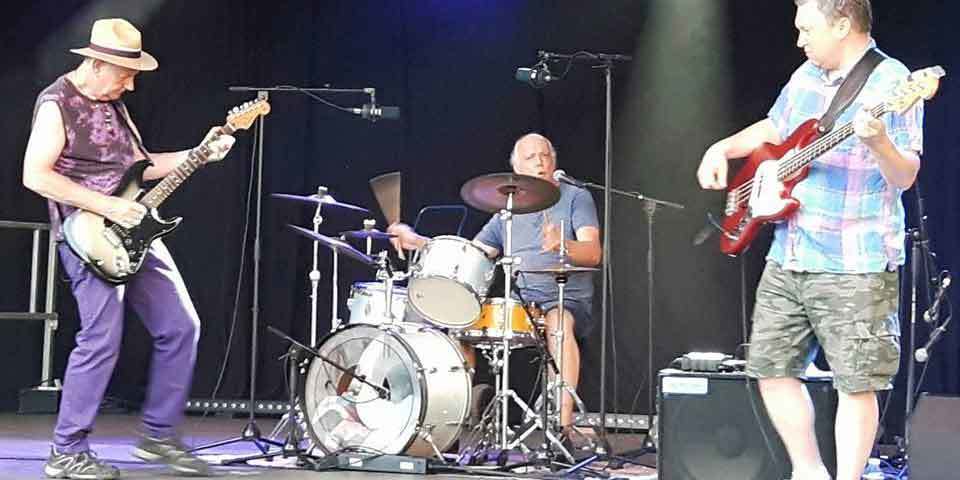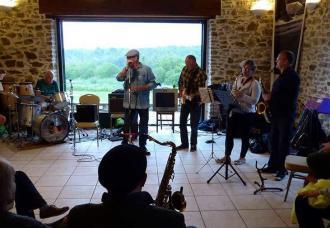The Magix Buss—Part Three: What makes a good drum recording?
For some time I borrowed a video camera off a chap I know and filmed myself playing drum solos in our (attached) barn. I was quite pleased with the results. Some time later another chap informed me that the sound was awful because it was bouncing back off the stone wall behind the kit. Had I – in fact – hit another stone…ummm brick wall?
Some money became available (ah those were the days!) and I invested in a USB interface. A Focusrite Scarlett 18i20. This allowed and indeed allows me to input all six mics from the drum-kit into the DAW (digital audio workstation). I also bought my self a ‘Go-Pro’ digital camera. Everything was set up. The mics were arranged and all I needed to do was play. And be creative.
Here are a few of my thoughts about what makes a good drum recording:
1/ The player
All recordings are limited or expanded by the quality of the performance. Thus as musicians we always need to improve and apply our brain, technique and TASTE to our recordings. The buck – the performance – stops with us.
2/ The drums and cymbals
With the best technique in the world you can’t make a dustbin lid sound like a top Zildjian cymbal. You might get a great dustbin lid sound – but…The quality of your drums and cymbals plus your musicianship give the fundamental essence to your recording. Beg/buy/borrow the best equipment you can and use that which is best suited to the solo or song you are playing. The equipment you play also reflects your personality and allows you to express yourself fully.
3/ The environment
Wherever you play/record will have a DIRECT impact on the sound of your recording. If you play in a room surrounded by bare stone walls that will give a completely different sound and feel to playing in a deadened/draped studio. Playing in a small room lined with wood will sound completely different to a huge bare hall. You can alter your environment by adding material that soaks up the sound. Remember – sound bounces off hard surfaces. Recording in a bathroom would give you lots of reverb – but you’re forever stuck with that once recorded. Reverb can always be added to a dry sound.
4/ Your mics
The quality of your mics are important. I got mine for a ‘song’ – wish I could buy better quality but I can’t. They are good and cheap and we are lucky that these models exist. Last time I was in a studio I think I was flanked by two mics worth a couple of thousand pounds between them. How many mics do you need? Ideally – one in the kick; one on the snare; one on each tom and a couple of overheads. You can add mics to the bottom of your snare; to the hi-hats; and place in various parts of the room you are recording in. You could easily get by with a mic on the snare and in the kick and a couple of well-placed overheads. Be thoughtful where you place your mics. Experiment.
(Always make sure your sound input does not ‘clip’ – go so far into the red on your recording meter that the sound distorts.)
5/ Your DAW and plug-ins
The quality of the software and the plug-ins you use have a big affect too. CLA (Chris Lord- Alge [studio engineer]) do great drum plug-ins. You can add reverb/delay/EQ as you see fit. Panning of the drums is down to you – you are the engineer in this case. It is your ‘sound-vision’ that counts.
6/ Your ears
THESE are the most important things. Use them wisely and tastefully.
7/ You
How you mix your drums and how you master them – that will give YOU – YOUR sound. It’s as simple as that. With all your equipment or lack of equipment (like an artist using a ‘limited palette’) everything is filtered through your brain and manipulated through your hands. Get to know the tools you are working with. That means the sound of them and the technology recording them. Research!
8/ Wisdom and taste
It’s a long journey to become wise and tasteful and we will walk this walk for the whole of our musical lives.
Finally:
Now – what about this BUSS that I’ve been talking about since Part One? Well hop aboard. This was something I should have known about for a long time but I have only recently put into practice. Thus I (and you too I hope) will never stop learning. A buss (sub-mix buss in this case) allows me to put all my drum tracks into ONE track where I can control the whole sound of the kit. This becomes very useful towards the end of a mix. I can add effects to master the sound of the whole drum-kit…I can add reverb and an overall compressor (where the sound is compressed to give it more guts and volume). It might not sound like much but my recent edits have really been improved by this one application. I forgot about busses and hadn’t ever used one! BUT – I sought out drum mixing videos (etc) and learnt from them. In this modern age we have so much knowledge at hand. It is as if we have a university course in sound engineering at the click of a mouse – and we can become both its designer and student.
There are actual on-line courses too – and some are great. Through one of these in particular I learnt a lot about EQ-ing various components of the drum-kit and other instruments too.
Please – never stop learning. Never stop improving. Most importantly – NEVER stop playing.
Cheers!
If you want to have more idea of the drum-kit and its components please do check out drum page on youtube. And feel free to ask any questions.








